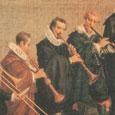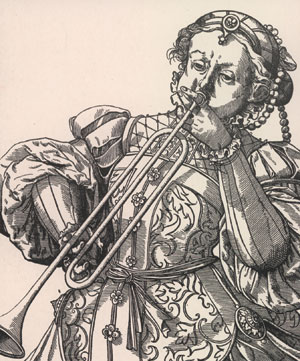 With the depth of concert band repertoire, band directors should include music history instruction as a part of rehearsals. Students would learn about compositional styles, performance practices, cultural influences, and the biographies of composers as they perform works composed during each of the historical epochs of Western music.
With the depth of concert band repertoire, band directors should include music history instruction as a part of rehearsals. Students would learn about compositional styles, performance practices, cultural influences, and the biographies of composers as they perform works composed during each of the historical epochs of Western music.
While the history of the concert band is fascinating with its evolution traced back to times of antiquity, finding modern editions of original band works composed prior to the 20th century can be difficult. Band directors can use transcriptions of orchestral, choral, and keyboard compositions to supplement existing literature to teach music history; but modern editions of early wind band works lend greater authenticity to both lessons in music history and concert programming. Modern editions of early band works also are more suitable for band instruments than transcriptions of string and keyboard music.
The Renaissance
Groups of wind musicians flourished throughout the Renaissance era (1400 – 1600), to the point that by the 16th century instrumental music was regarded with a new sense of legitimacy that had been unknown during the Middle Ages. During the Renaissance, medieval instruments were suddenly replaced with new instruments, often constructed in families of varying sizes. As a result two types of ensembles became popular: those with similar instruments (consorts) and those with different instruments (broken consorts).
Ensembles of wind instrumentalists often provided court music, and the earliest semblance of a band – the Ecurie – developed in France during the reign of François I. The Ecurie was actually an outdoor stable band of loud instruments of the Renaissance – trumpets, fifes, shawms, and sackbuts.
An early form of community band also emerged as watchmen from medieval cities became guilded musicians known as Stadtpfifer. In Venice during the waning years of the Renaissance, political aspirations, architectural genius, and a family’s musical dynasty converged to produce some of the most magnificent music ever heard. The Gabrielis composed inspired wind music for the grand interior of St. Mark’s Cathedral. (In the following repertoire lists, * indicates an original work for band.)
Renaissance Music Arranged for Concert Band
Grade 2
Fanfare, Ode, and Festival by Bob Margolis (after Claude Gervaise) (Manhattan Beach)
Renaissance Festival & Dances by Bruce Pearson (after Susato and Holborne) (Kjos)
Renaissance Festival by Tielman Susato/James Curnow (Curnow)
The Battle Pavane by Tielman Susato/Bob Margolis (Manhattan Beach)
Soldiers Procession and Sword Dance by Tielman Susato/Bob Margolis (Manhattan Beach)
Fa Una Canzona by Orazio Vecchi/Larry Daehn (Daehn Publications)
Grade 3
Belle Qui Tien Ma Vie by Thoinot Arbeau/Bob Margolis (Manhattan Beach)
The Battell by William Byrd/Gordon Jacob (Boosey & Hawkes)
Prelude in the Dorian Mode by Antonio de Cabezon/Percy Grainger, (Hal Leonard)
The Renaissance Fair by Bob Margolis (Manhattan Beach)
Royal Coronation Dances by Bob Margolis (after Claude Gervaise) (Manhattan Beach)
Terpsichore Suite by Michael Praetorius/Ross (LudwigMasters)
Renaissance Suite by Tielman Susato/James Curnow (Hal Leonard)
Grade 4
Toccata by Girolamo Frescobaldi/Earl Slocum (Alfred)
Canzona #1 (Canzon Primi Toni a8, from Sacrae Symphoniae) by Giovanni Gabrieli/Bob Margolis (Manhattan Beach)
Courtly Airs and Dances by Ron Nelson (Ludwig- Masters)
Grade 5
William Byrd Suite by Gordon Jacob (Boosey & Hawkes)
Grade 6
Terpsichore by Bob Margolis (after Praetorius) (Manhattan Beach)
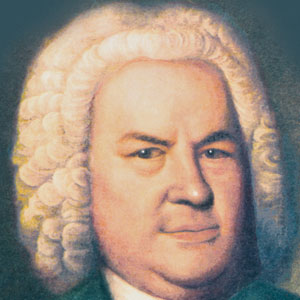
The Baroque
A paradox in the development of the concert band took place during the Baroque era (1600– 1750). The period included great innovations in the manufacturing of wind instruments, and the first wind band emerged; however, this fledgling prototype band was eclipsed by another new formidable instrumental ensemble: the orchestra. In spite of the orchestra overshadowing the band, wind music took a great step forward during the Baroque period. Through improved undercutting, the shawm evolved into the oboe; the bassoon was invented; and the slide trumpet proved to be a much more versatile instrument than its predecessor, the natural trumpet.
By the reign of Louis XIV, the court band was a true hautbois band made up of oboes, bassoons, cornetts, and sackbuts. German and English royalty imitated the Louis court oboe bands; and by the end of the Baroque era Handel had composed the great band work The Royal Fireworks Music for 24 oboes, 18 bassoons, 9 horns, 9 trumpets, and 3 sets of timpani and drums.
Baroque Music Arranged for Concert Band
Grade 2
Fugue 22 by J.S. Bach/Francis Caviani (Kendor)
Festival Prelude by J.S. Bach/Bob Margolis (Manhattan Beach)
No Shade So Rare by George Frideric Handel/ Leland Forsblad (Grand Mesa Music)
Cappricio by Johann Jacob/Andrew Balent (Bourne)
Set of Early English Airs by John Kinyon (Boosey & Hawkes)
Air and March by Henry Purcell/Philip Gordon (Alfred)
Aria by Georg Telemann/Larry Daehn (Daehn)
Grade 3
Prelude and Fugue in B flat Major; Prelude and Fugue in B flat Minor; Prelude and Fugue in D Minor; Prelude and Fugue in F Major; Prelude and Fugue in G Minor by J.S. Bach/Roland Moehlmann (Alfred)
O Mensch Bewein Dein Sunde Gross by J.S. Bach/Percy Grainger (Southern)
Chaconne with 13 Variations by George Frideric Handel/Andrew Balent (Bourne)
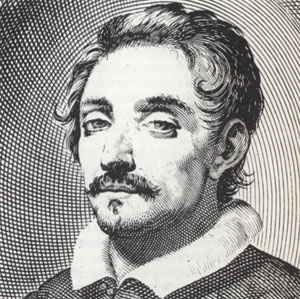
Grade 4
Fantasia in G Major by J.S. Bach/Richard F. Goldman and Robert L. Leist (Mercury Music)
Chorale prelude settings such as Come, Sweet Death My Jesus!; O, What Anguish; Sleepers, Awake! by J.S. Bach/Alfred Reed (C.L. Barnhouse)
Who Puts His Trust in God Most Just by J.S. Bach/James Croft (Shawnee Press)
Grade 5
Toccata and Fugue in D Minor by J.S. Bach/Erik Leidzen (Carl Fischer)
Ricercare a 6 by J.S. Bach/Clark McAlister/Frederick Fennell (LudwigMasters)
The Classical Era
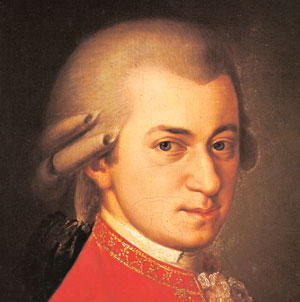 Three major trends during the Classical era (1750–1815) contributed to the development of band music – Janissary music, Harmoniemusik, and the bands of the French Revolution. From these distinct developments came a concert band similar to those of today – a large ensemble with full sections of woodwind, brass, and persuccion instruments.
Three major trends during the Classical era (1750–1815) contributed to the development of band music – Janissary music, Harmoniemusik, and the bands of the French Revolution. From these distinct developments came a concert band similar to those of today – a large ensemble with full sections of woodwind, brass, and persuccion instruments.
The Janissary (or Turkish) fad of the 18th century affected nearly every aspect of social and cultural life in Europe. Fashion trends, literature, music, and the consumption of coffee as a social pastime were influenced by the Turkish phenomenon. For band musicians the inclusion of piccolo, triangle, cymbals, and bass drum reflected the exotic flavor found in Turkish fashion.
The Harmoniemusik ensemble is made up of pairs of oboes, clarinets, horns, and bassoons; and every major and minor composer of the 18th century wrote both indoor and outdoor music for this versatile group. The repertoire of the Harmoniemusik ensemble included original works (small symphonies for band) as well as lucrative arrangements of opera scores. So popular were these Harmonie-musik bands that letters from Mozart to his father described their existence throughout Europe.
The French Revolution (1789– 1794) ushered in a rush to reject everything associated with the monarchy in favor of new objects that would reflect the ideals of the new republic: humanism replaced religion; democracy replaced autocracy; and the band replaced the orchestra. During the years immediately following the revolution, large concert bands provided music for massive outdoor spectacles intended to instill patriotic fervor among the citizens of the new republic.
Prominent composers for the French Republican Guard Band (including Charles-Simon Catel, François-Joseph Gossec, Louis Jadin, and Étienne-Nicolas Méhul) later established a music school that became known as the Paris Conservatory of Music, one of the greatest institutional proponents of wind music ever known.
The Classical era is also noted for the invention of the clarinet, which contended with the oboe as the predominant melodic woodwind instrument in bands and orchestras.
Classical Era Music for Concert Band
Grade 1
Allegro and Dance by W.A. Mozart/John Cacavas (Theodore Presser)
Minuet and Country Dance by W.A. Mozart/Philip Gordon (Theodore Presser)*
Grade 2
Ecossaise, WoO22 by Ludwig van Beethoven (ed. William Revelli) (G. Schirmer)
From an 18th Century Album by Theldon Meyers (TRN)
Ave Verum Corpus by W.A. Mozart/Barbara Buehlman (LudwigMasters)
Grade 3
Symphonie for Band by Louis Jadin (ed. Schaeffer) (Shawnee Press)*
St. Anthony Divertimento by Joseph Haydn/Joshua Wilcox (G. Schirmer)*
“Alleluia” from the motet Exultate Jubilate by W.A. Mozart/James Curnow (Curnow)
Trauermusik by W.A. Mozart/Eric Osterling (Ludwig-Masters)
Grade 4
Overture in C by Charles-Simon Catel (ed. Richard F. Goldman and Larry Alan Smith) (Merion Music)*
Symphonie Militaire by Charles-Simon Catel (ed. Townsend) (E.C. Kerby)*
Classic Overture by François Joseph Gossec (ed. Richard F. Goldman and Larry Alan Smith) (Mercury Music)*
Symphony in F by François Joseph Gossec (ed. Richard F. Goldman and Robert L. Leist) (Mercury Music)*
Overture in F by Hyacinthe Jadin (ed. Townsend) (Franco Colombo)*
Grade 5
Military March by Ludwig van Beethoven (Masters Music)*
Military March in D by Ludwig van Beethoven (ed. John R. Bourgeois) (Wingert-Jones)*
Overture in F by Étienne-Henri Méhul (Southern Music)*
The Romantic Period
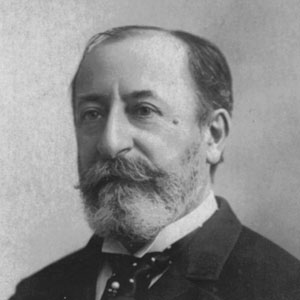 Tremendous improvements were made in instrument manufacturing during the Romantic period (1815 – 1930), including the invention of innovative new wind instruments, such as the saxophone and tuba, and a practical valve for brass instruments. Yet for all of these great advances in wind instrument design and construction, Romantic-era bands were once again overshadowed by composers’ preference for the orchestra.
Tremendous improvements were made in instrument manufacturing during the Romantic period (1815 – 1930), including the invention of innovative new wind instruments, such as the saxophone and tuba, and a practical valve for brass instruments. Yet for all of these great advances in wind instrument design and construction, Romantic-era bands were once again overshadowed by composers’ preference for the orchestra.
In spite of this, incredible compositions for concert band were penned by both major and lesser-known composers of the 19th century; in fact, the greatest of the Romantic composers wrote for band, including, Richard Wagner, Camille Saint-Saëns, Felix Mendelssohn, Hector Berlioz, and Ottorino Respighi.
Romantic Period Music for Band
Grade 2
As Torrents in Summer by Edward Elgar/ Albert Oliver Davis (LudwigMasters)
Rustic Dance by Bedrich Smetana/ Philip Gordon (Theodore Presser)
Grade 3
Blessed Are They by Johannes Brahms/ Barbara Buehlman (LudwigMasters)
Three Little Pieces by Anton Bruckner/ Bishop (Oxford University Press)
Two Lyric Pieces by Edvard Grieg/John Constantine (Theodore Presser)
Tchaikovsky Album by Peter Tchaikovsky/Bob Margolis (Manhattan Beach Music)
Grade 4
Three Chorale Preludes, Op. 122 by Johannes Brahms/Boyd/Frederick Fennell (LudwigMasters)
Two Chorale Preludes by Johannes Brahms/Guenther (LudwigMasters)
Sursum Corda, Op. 11 by Edward Elgar/ Bruce Houseknecht (Carl Fischer)
Fugue in C by Charles Ives/Sinclair (Peer/Southern Music)
Old Home Days by Charles Ives/Jon-athan Elkus (Peer/Southern Music)
Trauer Marsch, Op. 103 by Felix Mendelssohn/Erik Leidzen (Associ-ated Music)*
Marche Héroïque, Op. 34 by Camille Saint-Saëns/Winterbottom (Boosey & Hawkes)
Marche Militaire Française by Camille Saint-Saëns/M.L. Lake (Carl Fischer)
Pas Redoublé, Op. 86 by Camille Saint-Saëns/Frackenpohl (Shawnee Press)*
Allerseelen by Richard Strauss/Albert Oliver Davis (LudwigMasters)
Elsa’s Procession to the Cathedral by Richard Wagner/Lucien Cailliet (Alfred)
Grade 5
Grande Symphonie Funèbre et Triomphale, Op. 15 by Hector Berlioz (Kalmus; ed. Whitwell: Ruh Music)*
Variations on “America” by Charles Ives/Schuman/Rhoads (Theodore Presser)
Country Band March by Charles Ives/Sinclair (Theodore Presser)
Overture for Band, Op. 24 by Felix Mendelssohn (ed. Boyd: LudwigMasters; ed. Garofalo: Grand Mesa Music)*
The Universal Judgment by Camille de Nardis (Carl Fischer)*
Orient et Occident, Op. 25 by Camille Saint-Saëns (Kalmus; ed. Schissel: LudwigMasters)*
Dance of the Jesters by Peter Tchaikov-sky/Ray Cramer (Curnow Music)
Trauersinfonie or Trauermusik by Richard Wagner (ed. Erik Leidzen: Associated; ed. Votta: LudwigMasters)*
Grade 6
Huntingtower, Op. 173 by Ottorino Respighi (Alfred)*
Band directors can easily integrate historical lessons into band rehearsals. To begin, I suggest captivating your students’ imaginations by occasionally offering two-minute presentations of biographical, historical, and cultural facts during rehearsals. You can download photographs and illustrations from the internet as well as have students listen to a recording of the original version of a composition when you are preparing a transcription.
Old music will come alive when you share authentic historical performance practices with your bands. Refreshing your knowledge of these practices is important; some useful books include Valery Lloyd-Watts and Carole L. Bigler’s Ornamentation: A Question & Answer Manual (Alfred) and Edward Cone’s Musical Form and Musical Performance (Norton & Co.)
Throughout these four major music eras, bands of wind and percussion musicians performed a rich body of ever-changing and evolving music. By studying the performance practices of this music as well as the cultural influences of each era, our music students will gain a wealth of knowledge about music history as they rehearse and perform.
